Vintage Chip Collection
Introduction
As a retrocomputing and electronics enthusiast, there are several vintage computer chips in my collection.
Chips
Zilog Z80
- Production Date: 1999, 21th week.
- Purchase Date: 2020-04
- Mastodon post: link
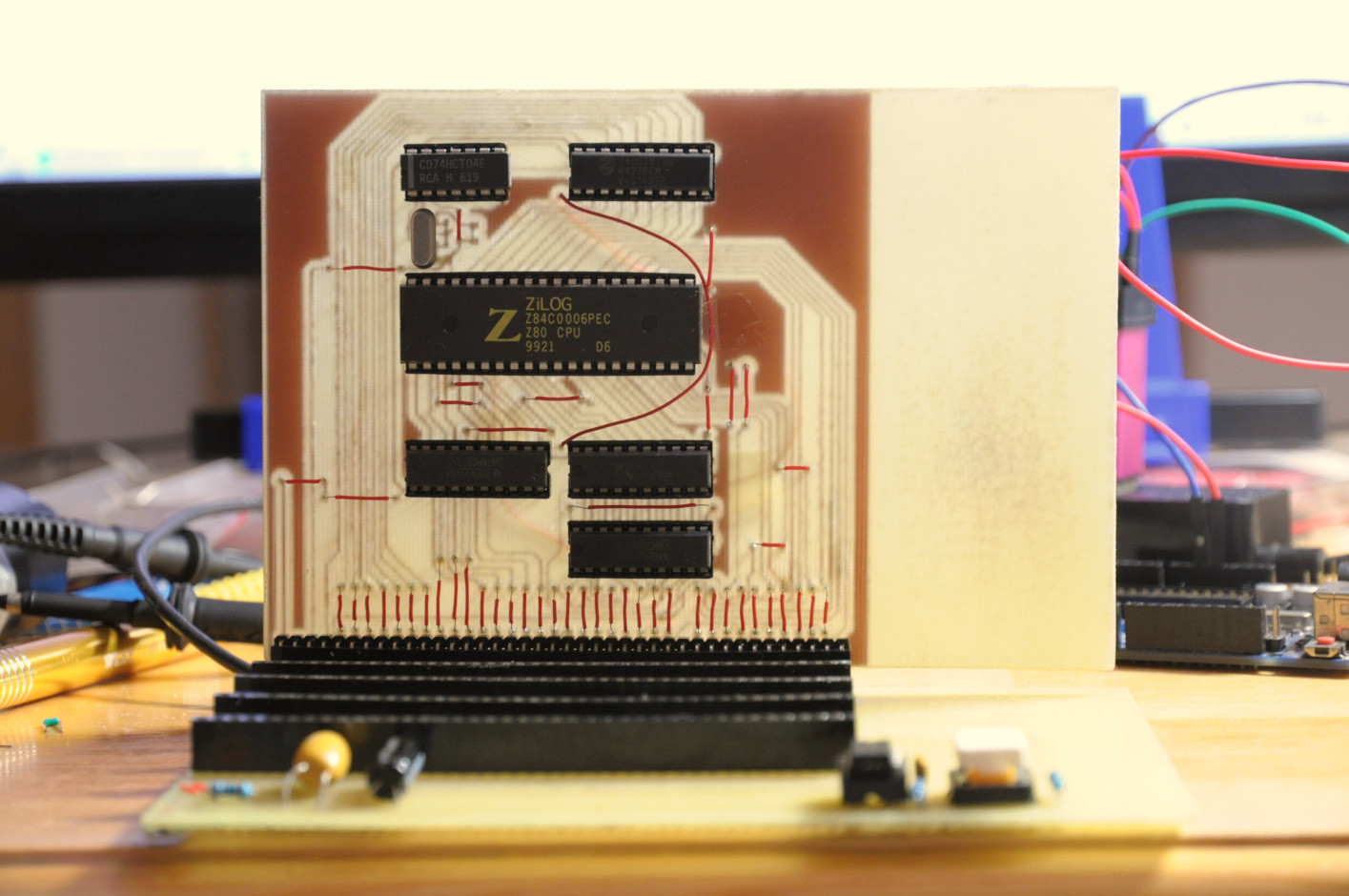
After two engineers left Intel in the 1970s, a startup company named Zilog soon released a new microprocessor as the company’s first product - Zilog Z80. Designed by Federico Faggin and Masatoshi Shima, they were also the original designers of the Intel 4004 and Intel 8080.
Zilog Z80, as an enhanced Intel 8080 with more functionalities and lower price, soon become a classic 8-bit microprocessor in 1980s, used by numerous home computers that still have a large fanbase today. It was also so widely in embedded systems that the chip still remains in production today! This is why my chip is fairly new, made in 1999.
I purchased this chip to for a homebrew computer retrocomputing project. The project was not completed as I moved onto other projects (Gigabit Ethernet and USB 3.0, not so retro…), stopped at the PCB-stage. The CPU board in the photo is the only completed portion of the system.
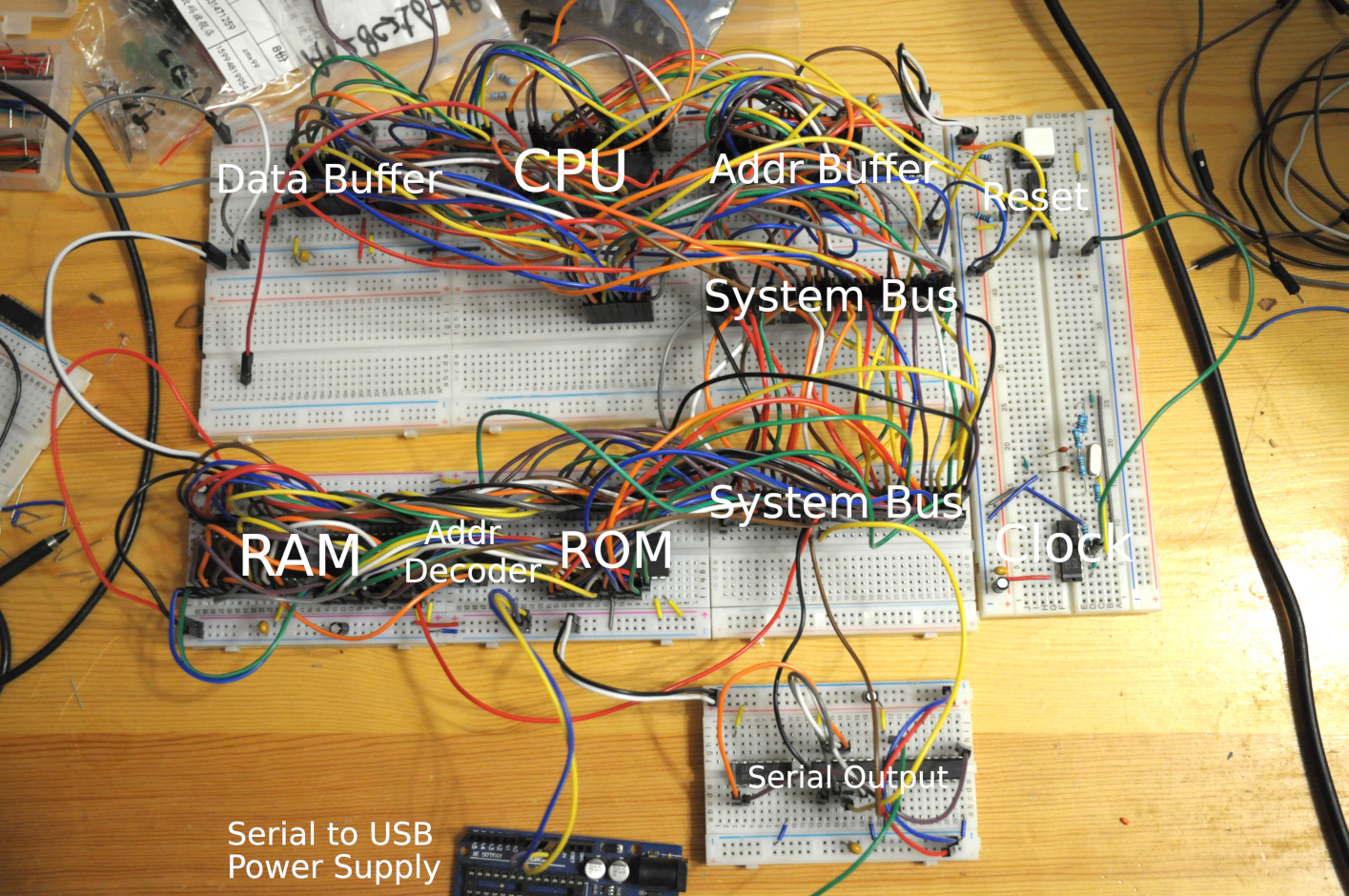
But I did made a working breadboard prototype.
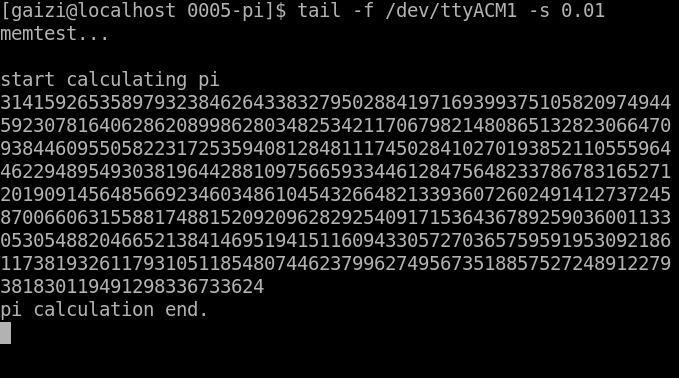
And it could calculate π.
I liveposted many things as I was building this computer. You can follow the full thread here.
AMD 8086 (x86)
- Production Date: 1984, 18th week.
- Purchase Date: 2020-04-27
- Mastodon post: link
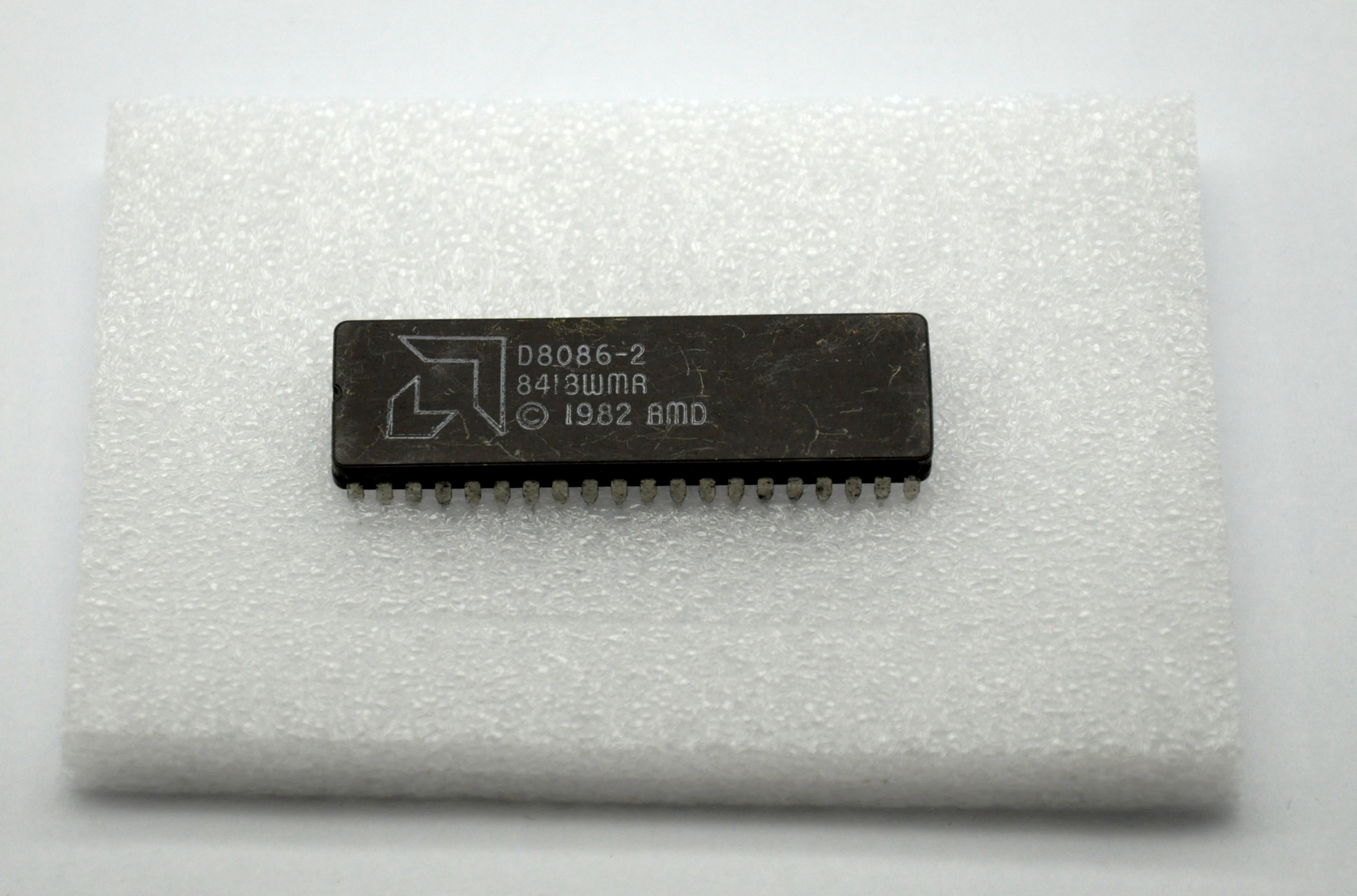
My AMD CPU arrived. Time to upgrade my computer from Intel to AMD, like all the cool kids did!
Intel 8086 was the first CPU in the x86 architecture, the computer architecture that we’re still using today. To make it more interesting, this is not an original, but a second-source 8086 made by AMD - which is Intel’s competitor from the beginning of time.
In the computing world, things come and go, but there are things that never change.
As of 2020, AMD just released the latest Zen 2 CPUs, which offers higher performance than Intel’s competing products and generated so much hype in among PC enthusiasts. I posted this chip with the “upgrade from Intel to AMD” joke to Reddit r/amd and received 1000+ upvotes, apparently many people found this historical joke was entertaining.
Cyrix/IBM 6x86MX PR200
- Production Date: circa 1997?
- Purchase Date: circa 2016, gift from a friend.
- Mastodon post: link
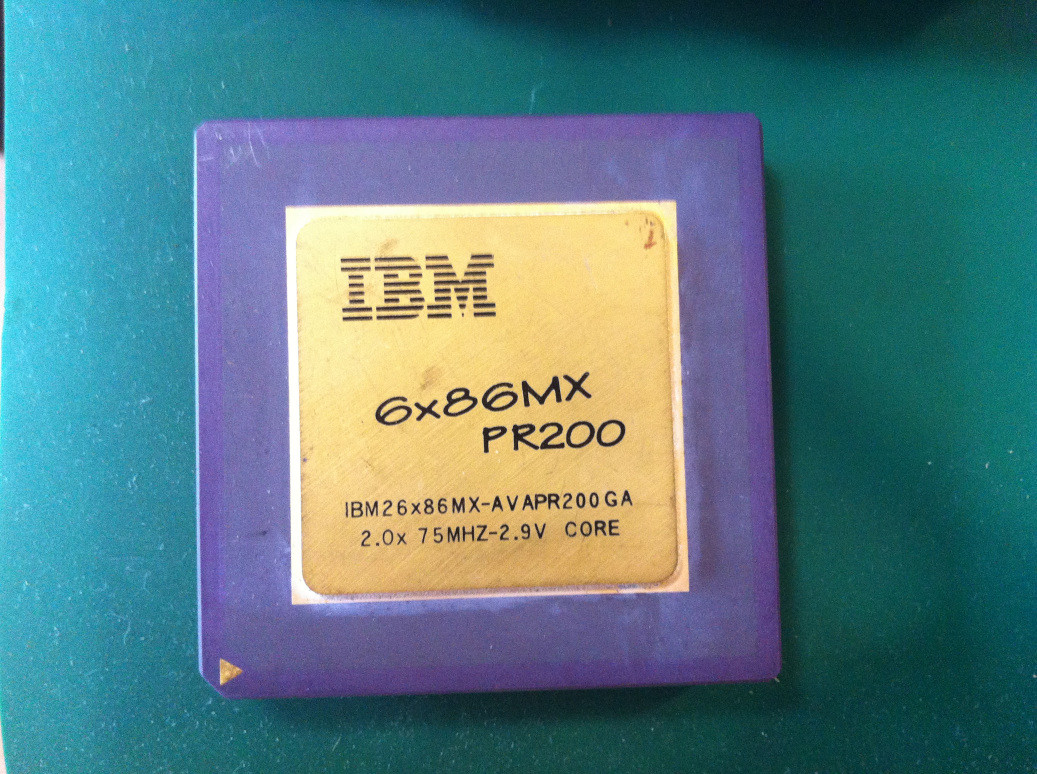
This particular microprocessor is branded and sold by IBM, but it’s a Cyrix product. Cyrix was a vendor of low-cost x86 microprocessors in the 1990s. The Cyrix 6x86 series (1995) was its flagship and best known product, its integer performance was able to outperform the more expensive, faster clocked Intel Pentium, and was the CPU-of-choice by budget computer builders and enthusiasts. Unfortuately, its lower floating point performance soon made it uncompetitive.
The 6x86MX was an update to the 6x86 series, adding the MMX instruction set, “PR200” means its competitor is the 200 MHz Pentium.
DEC F-11 (PDP-11)
- Production Date: 1984, 48th week.
- Purchase Date: 2020-02-14
- Mastodon post: link
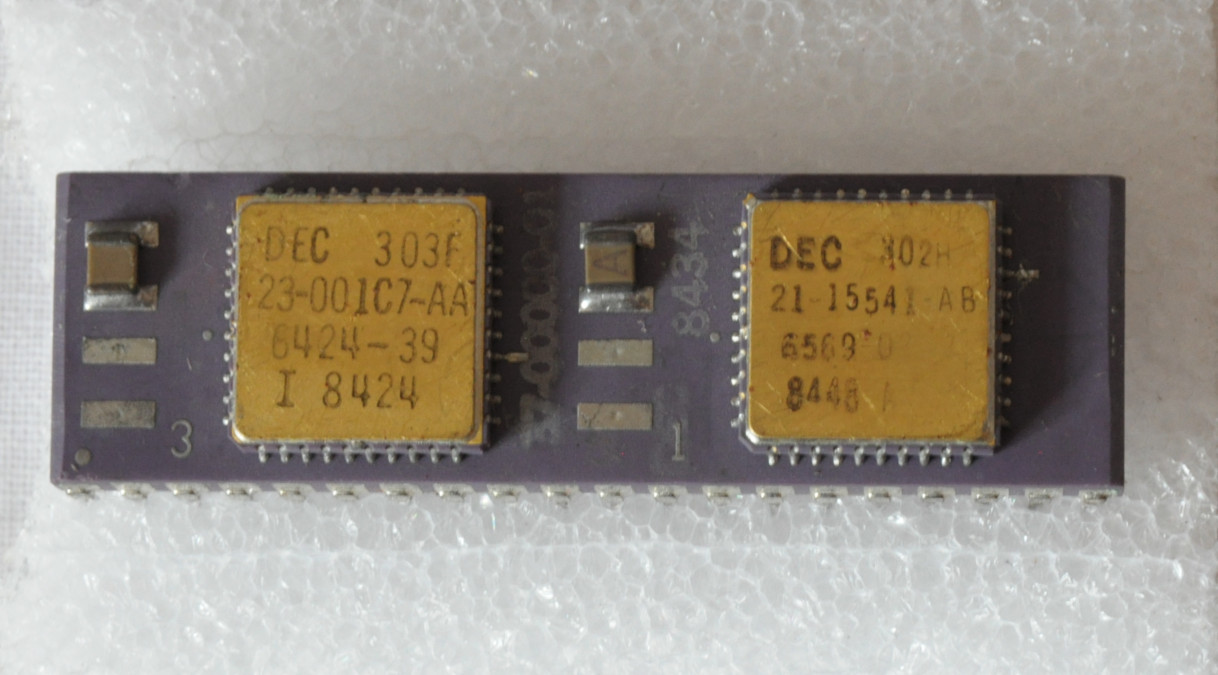
Treasure hunt victory. I just found a DEC F-11 CPU from Shenzhen. It’s the microprocessor of the PDP-11 computers, including PDP-11/23 and PDP-11/24. Now I’m a proud owner of a PDP-11 on a chip.
The PDP-11 computer was released in 1970 by Digital Equipment Corporation (DEC), and argubly it’s one of the most important computers of all time: it was the birthplace of the C programming language and the UNIX operating system. The first generation’s CPU was made by discrete 74xx-series logic chips on large circuit boards. But as semiconductor technology progressed, it became possible to integrate almost all components on the CPU board as a few chips using Large-Scale Integration. Hence, later PDP-11 generations are subsquently known as LSI-11. Using modern language, we can call it “PDP-11 on a chip.”
In PDP-11’s history, DEC has reimplement the original CPU as integrated circuits for three times. The F-11 microprocessor was the second generation, released in the late 70s and used in PDP-11/23 and PDP-11/24. It was the first chip completely designed in-house by DEC, unlike the first-generation MCP-1600 chips by Western Digital (Western Digital began as a chip company, it later started making HDD controller chips and eventually became a HDD vendor).
The F-11 microprocessor is implemented as a multi-chip module, the two PLCC-packaged chips and two surface-mount capacitors are soldered onto a DIP chip carrier - surface-mount technology in 1984, it was the cutting edge.
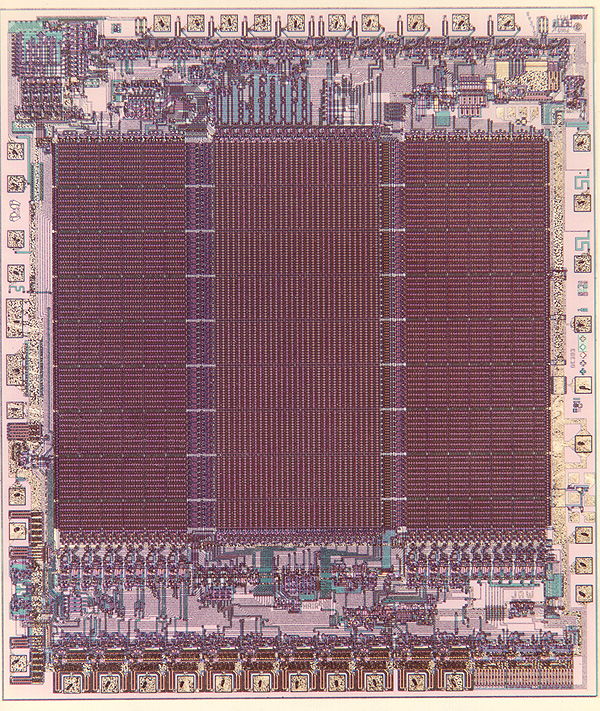
DEC DC303 Dieshot, source: SimH
The DC303 chip on the left is the Control Unit of the microprocessor, responsible for controlling the overall operating of the CPU. Internally, it’s a large Programmable Logic Array (PLA), where the microcode is stored. You can easily see the repeating structure from the dieshot, quite similar to a ROM.

DEC DC302 Dieshot, source: SimH
The DC302 chip on the right is the Data Chip, which mainly includes the ALU, registers and the data path of the processor, implemented by 6000+ transistors.
If you want to run a full-featured, multi-user operating system, DEC also offered optional Memory Management Unit (MMU) and Floating Point Unit (FPU), but I have neither, thus running UNIX is not an option.
Both chips were manufactured by a 6-micron NMOS semiconductor process, the power consumption was 1.5 W + 1.0 W (NMOS runs hot!).
I’d love to build my own PDP-11 from scratch with this microprocessor, Unfortunately, while there is much documentation about the 3rd-gen DEC J-11, I couldn’t find any documentation for the 2nd-gen F-11 - There are documents, but they’re all system-level manuals and schematics for the PDP-11/24 computer system, not chip-level. If I want to bring the chip back to life, I have to “reverse engineer” the specification of the chip by working backwards from a PDP-11 system and it won’t be a small project, and I’m not even sure whether this chip is still working. Hence, it will remain as a collection item for now.
Intersil IM-6100 & Harris HD-6120 (PDP-8)
- Production Date: 1981, 2nd week & 1983, 1st week.
- Purchase Date: 2020-05-31
- Mastodon post: link
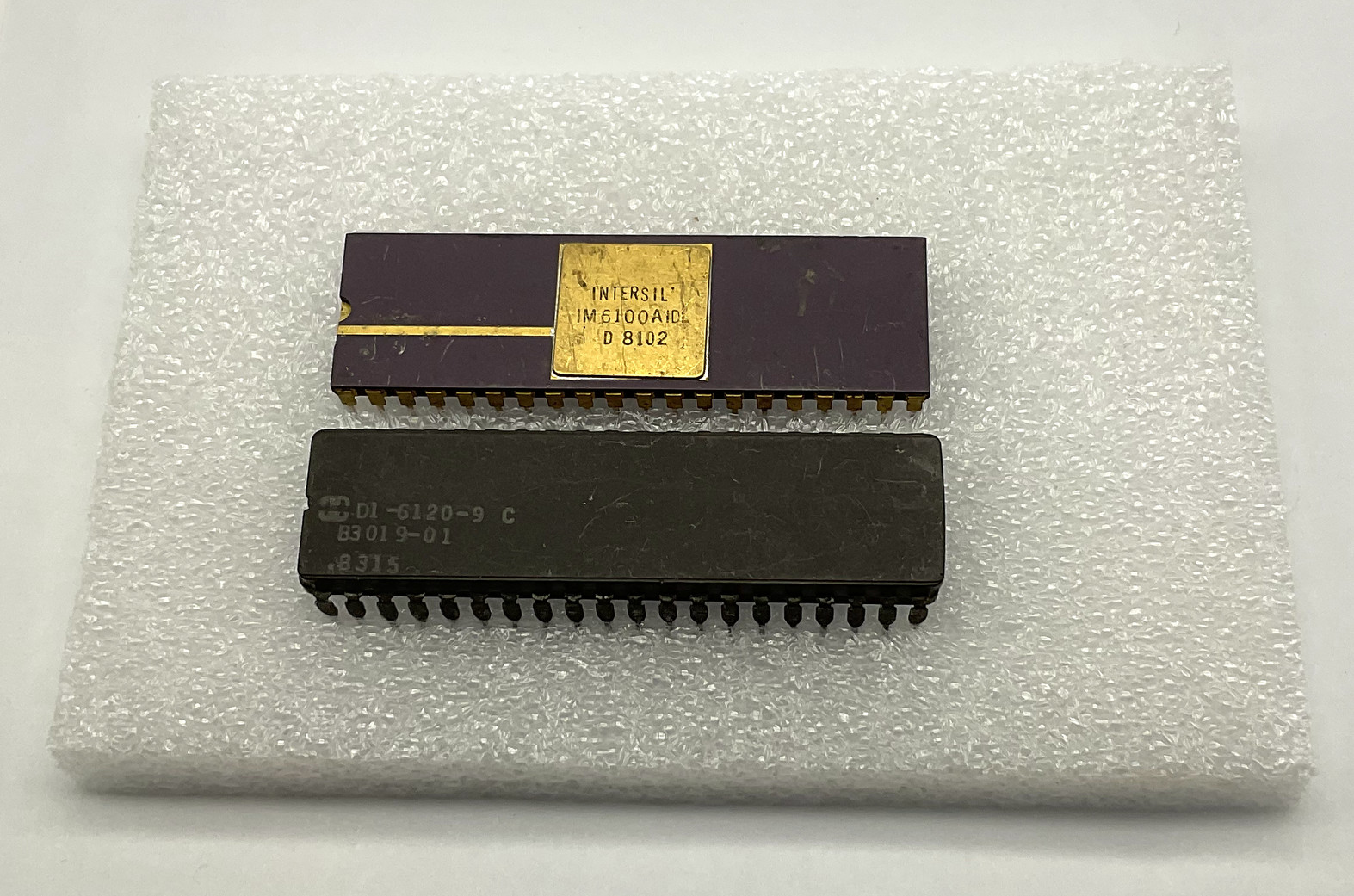
More treasure hunt victory from Shenzhen: Intersil IM-6100, IM-6100A and Harris HD-6120 CPUs - PDP-8-on-a-chip! Also known as “CMOS-8s”.
PDP-8 was released in 1965 by DEC. Being one of the earliest minicomputers, it was a milestone in computer history. The CPU in the first PDP-8 machines (nicknamed “Straight-8s”) were made by discrete transistors (Diode-Transistor Logic). But as semiconductor technology progressed, it was later possible to implement it using Medium-Scale Integration using 74xx logic chips to replace individual diodes and transistors.
Eventually, in the late 70s, the last generation of PDP-8 CPUs were implemented as a single chip, using CMOS Large-Scale Integration, nicknamed “CMOS-8s”. Thanks to CMOS, the total power consumption was just 50 milliwatts and they were used in several embedded system applications.
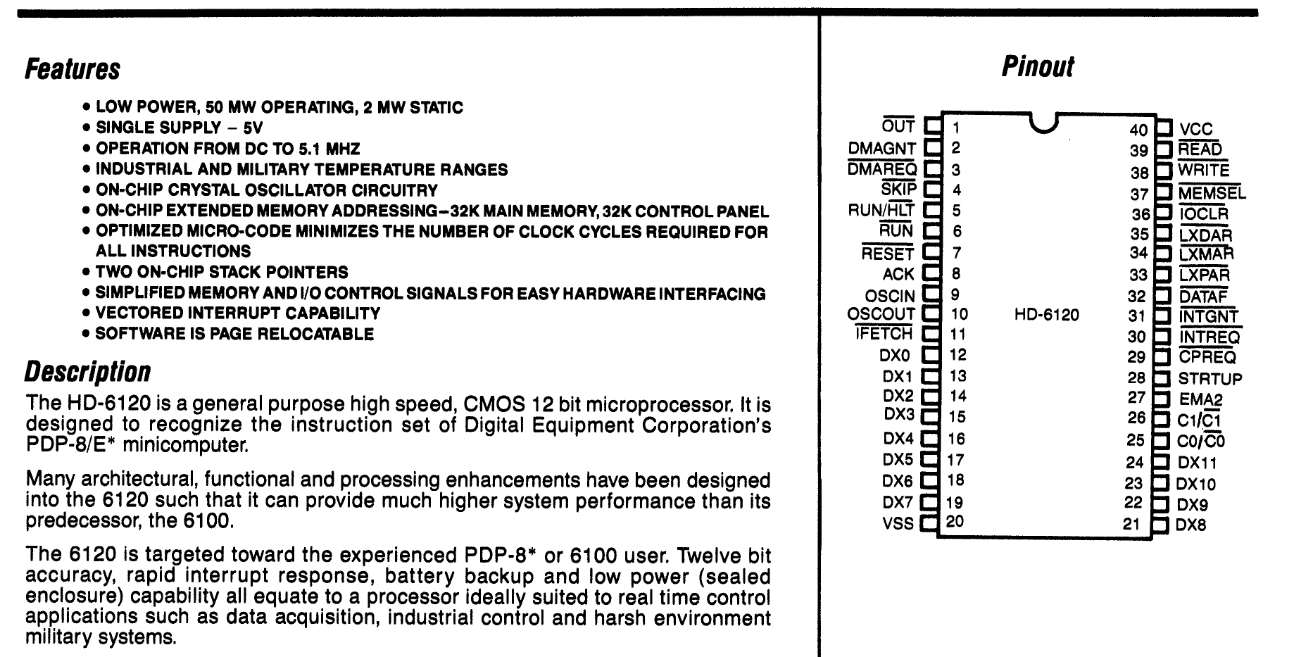
And fortunately, documentation is available. Making a PDP-8 computer can be my next project.
More to come
Watch this place.